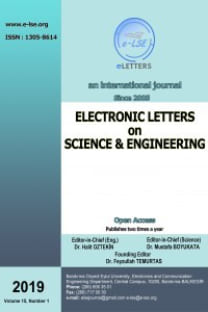BIOSORPTION OF METHYL ORANGE DYE BY YELLOW MUSTARD SEEDS (Sinapis Alba L.)
Dyes are the common contaminants in the aquatic environment even at trace levels. One of the most dangerous carcinogenic organic materials is acidic-anionic dyes. Methyl orange is an acid base indicator. Textile, printing, paper and food industries have been used Methyl orange. Biosorption can be used for the removal of dyes from wastewater. Biological materials such as aquatic plants, seeds, agriculture wastes, microorganisms, fungi and algae are used in this technique as a biosorbent. Both living and non-living materials can be used for dye removal. Biosorbent materials can easily available and low-cost. In this study, the biosorption of toxic methyl orange from aqueous effluents by yellow mustard seeds (Sinapis alba L.) was studied in a batch system. Equilibrium tests were done by contacting 1.0 g of with 30 mL of Methyl orange solution at different initials concentrations at room temperature (25 0C). The supernatant was centrifuged at 4000 rpm and 10 minutes in a centifugal (Hettich Zentrifugen) after batch tests. The absorbance of Methyl orange can be measured at 467 nm by UV–vis spectrophotometer (T 90). The initial dye concentrations for the contact time experiments was 50, 100, 200, 300 and 400 mg/L. The incubation times ranged from 5 to 160 min. The effects of initial dye concentration, kinetic and isotherm behaviors were investigated. Data obtained from batch studies applied to Langmuir and Freundlich isotherm models. Freundlich model (R2=0.9965) was well described for the system. Adsorption thermodynamic was also studied. The results showed that the yellow mustard seeds (Sinapis alba L.) can be successfully used for the removal of methyl orange.
